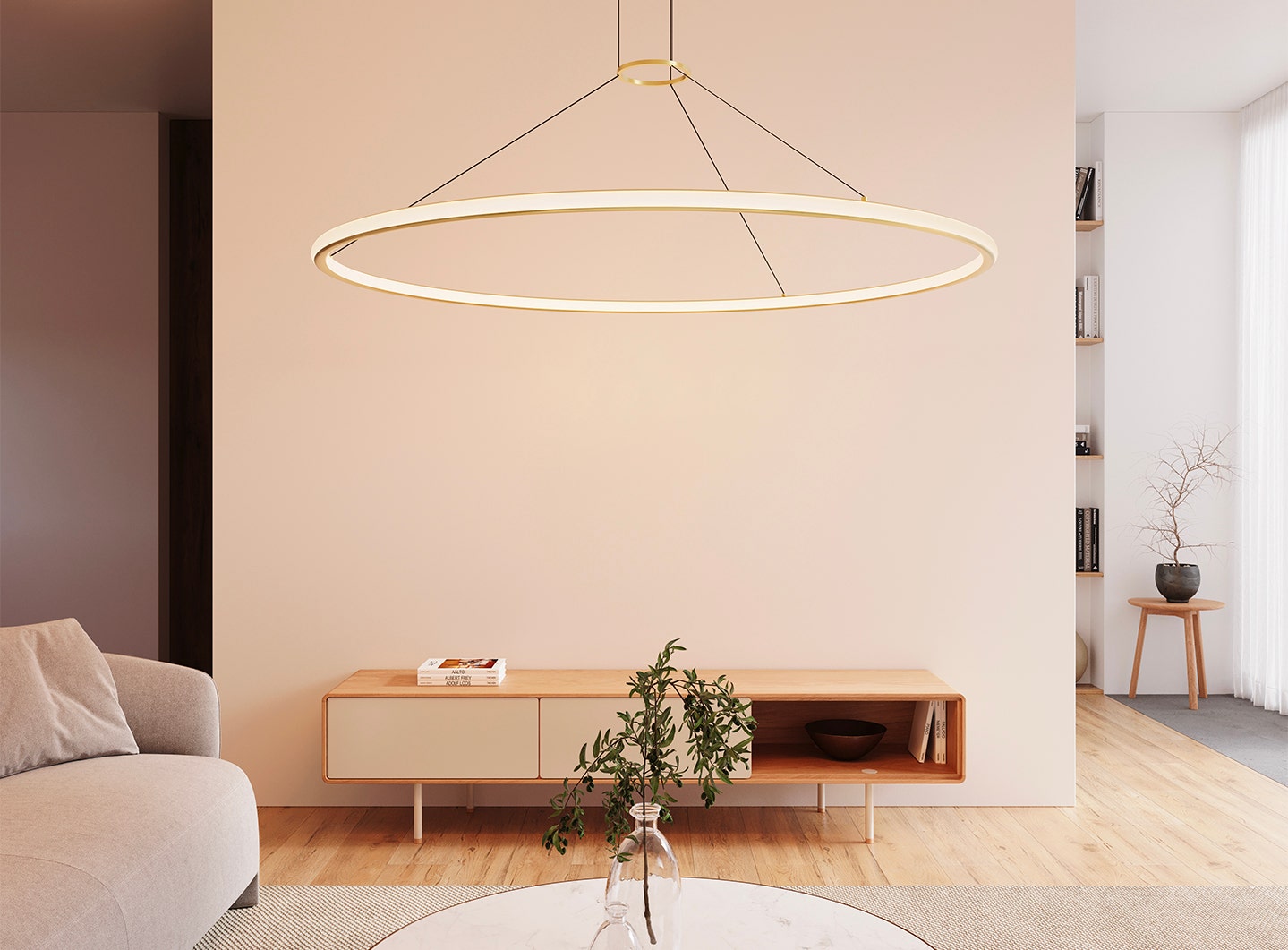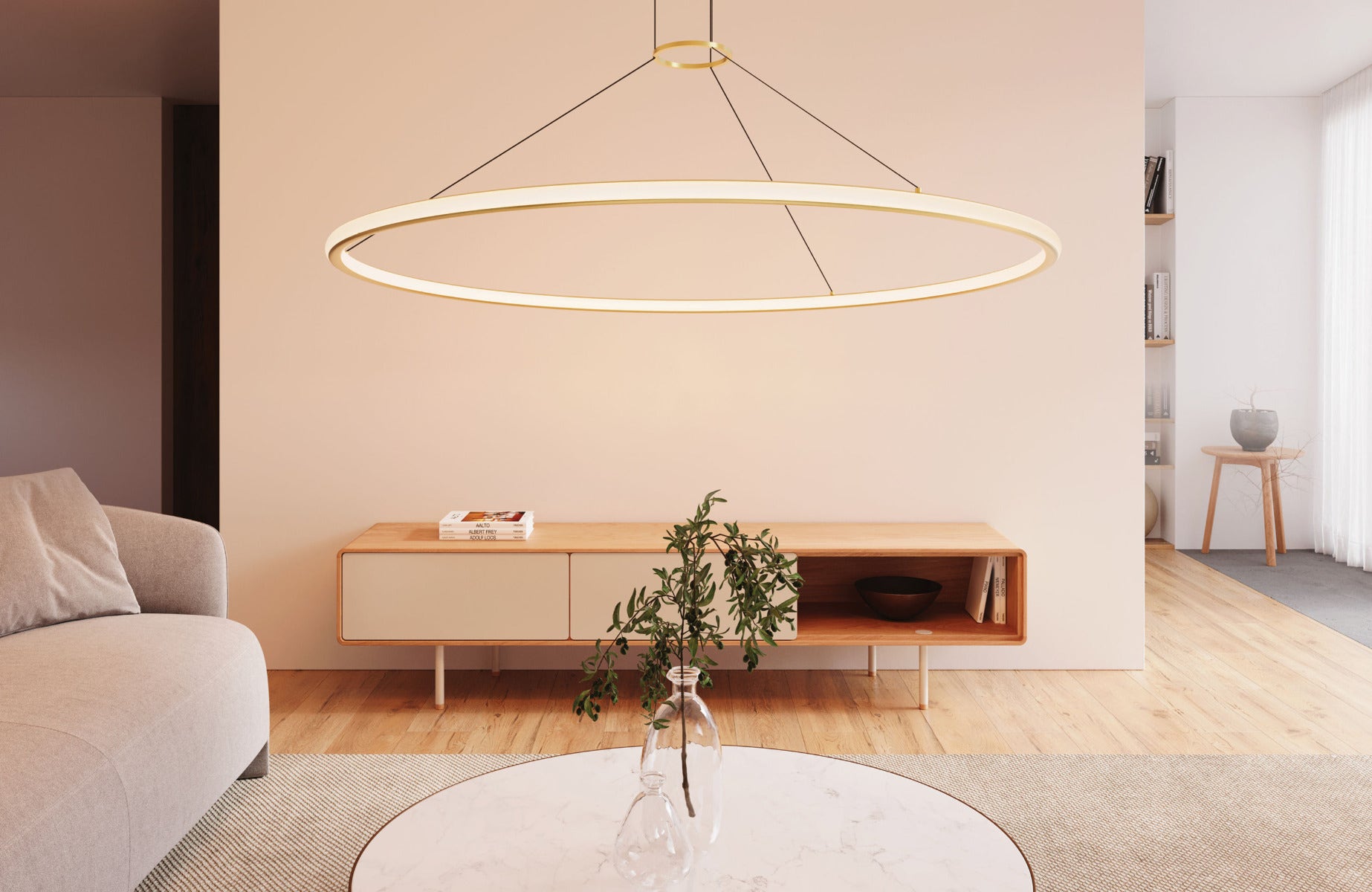
Lighting Color Temperature 101
THE LIGHTING GUIDE
Lighting Color Temperature 101
Cracking the code of color temperatures
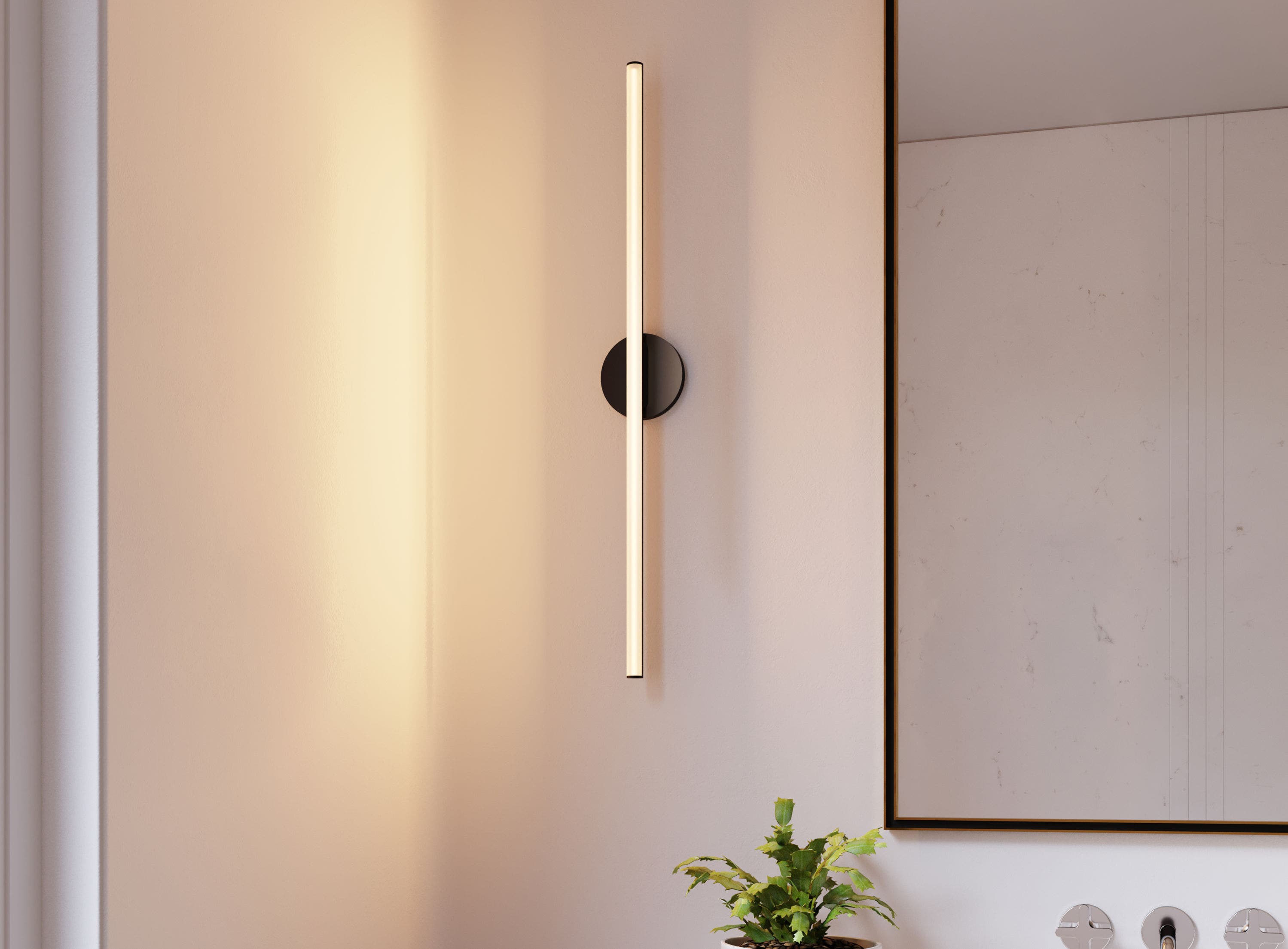

When it comes to crafting the right mood for a room, we believe that lighting is a crucial factor for success. Every space at home, from the living room to the bathroom, needs to meet the moment: we want our kitchens and home offices to vibrantly illuminate work surfaces and energize our focus, while we expect our living rooms and bedrooms to enable relaxation through a warm, welcoming glow. These nuanced and varied effects are accomplished through not the design or directionality of a fixture, but from its lighting color temperature.
At face value, the notion and nomenclature of color temperatures can seem intimidating at first. Even the most intentionally designed spaces can overlook the power of lighting color temperature when examining a spatial whole. However, at its best, lighting color temperature creates the optimal mood and feeling of any room at home by marrying the psychological needs and desired aesthetics of a space. At SONNEMAN, many of our fixtures are offered in three distinct color temperatures—2700K, 3000K and 3500K—and, in this all-encompassing guide, will demystify the details of lighting temperature so that you can illuminate your home with ease.

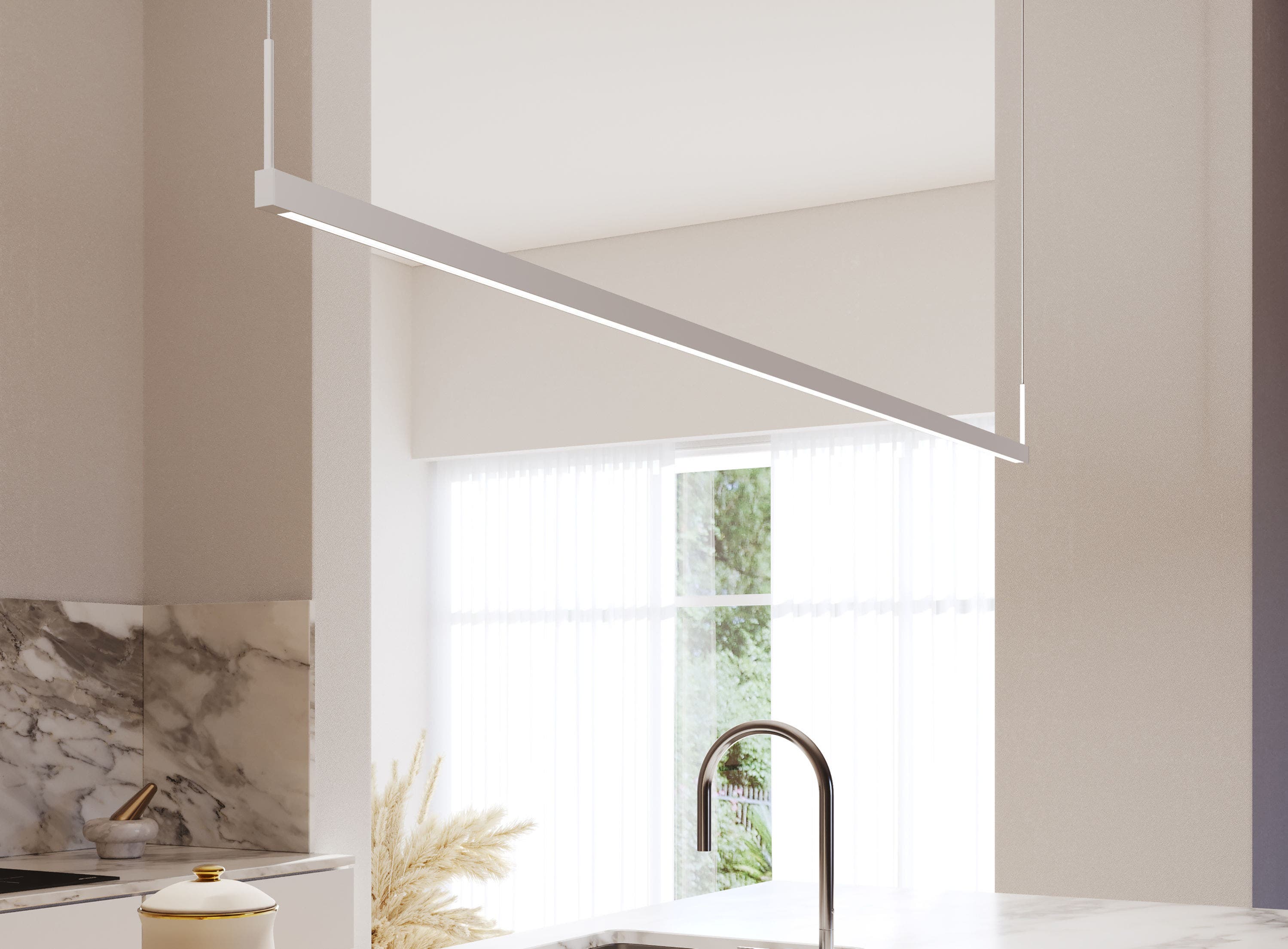
What is a Kelvin?
Lighting color temperature is measured in Kelvins: the degrees by which light is either warm or bright. Kelvins—abbreviated as K— describe the bulb’s temperature on a scale of 2000K to over 6500K. As a general rule of thumb, the higher a bulb’s Kelvin value, the brighter and whiter the light and, consequently, the lower a bulb’s Kelvin value, the warmer and tawnier the light.
All SONNEMAN lighting features color temperatures that range from 2700K to 3000K and different lighting color temperatures are suited to different settings for the best results. When choosing a new lighting fixture for your home, incorporate color temperatures that are suited to each room’s desired real-life use.
What is Color Temperature?
First, we’re going to provide a definition for what “color temperature” means in practice. Lighting color temperature describes the appearance of light provided by a fixture’s bulb, ranging from warmly toned glows to vibrantly cool illumination. Ideally, the spaces you’re designing at home have a color temperature suited to how you’ll live and work in each.


Illuminating Your Space with Lighting Color Temperature as Your Guide
Our minimalist, straightforward lighting designs for every room at home espouse the view that natural light reigns supreme. To that end, the variations of light color temperatures used in SONNEMAN fixtures are on the lower-end of the spectrum, avoiding harsh bright whites and instead opting for warm vibrancy that echoes natural light sources.
2700K Color Temperature or Warm White
At the lower end of the SONNEMAN color temperatures spectrum, 2700K is a warm white tone. 2700K creates a friendly and intimate environment, ideal for living rooms and bedrooms where we relax and unwind. In addition, this lighting color temperature fits the bill for pendant lighting hanging above a kitchen island.
3000K Color Temperature or Soft White Glow
At 3000K, you’ll still get a warm tone with a soft touch and a hint of more vibrancy suited for tactical lighting applications. This lighting color temperature is suited for dining rooms, bathrooms, entryways and outdoor lighting. Additionally, if your home lacks a robust natural lighting source, this color temperature can be used in combination with recessed lighting throughout your home to level-up your base layer of lighting.
3500K Color Temperature or Neutral White Glow
At the higher end of the SONNEMAN color temperature range, 3500K projects the brightest and whitest light, all the while maintaining a neutrally white glow. At home, this color temperature is suited to bathroom vanity lighting, kitchens and home offices. In addition, 3500K is ideal for high-traffic hospitality and commercial environments.
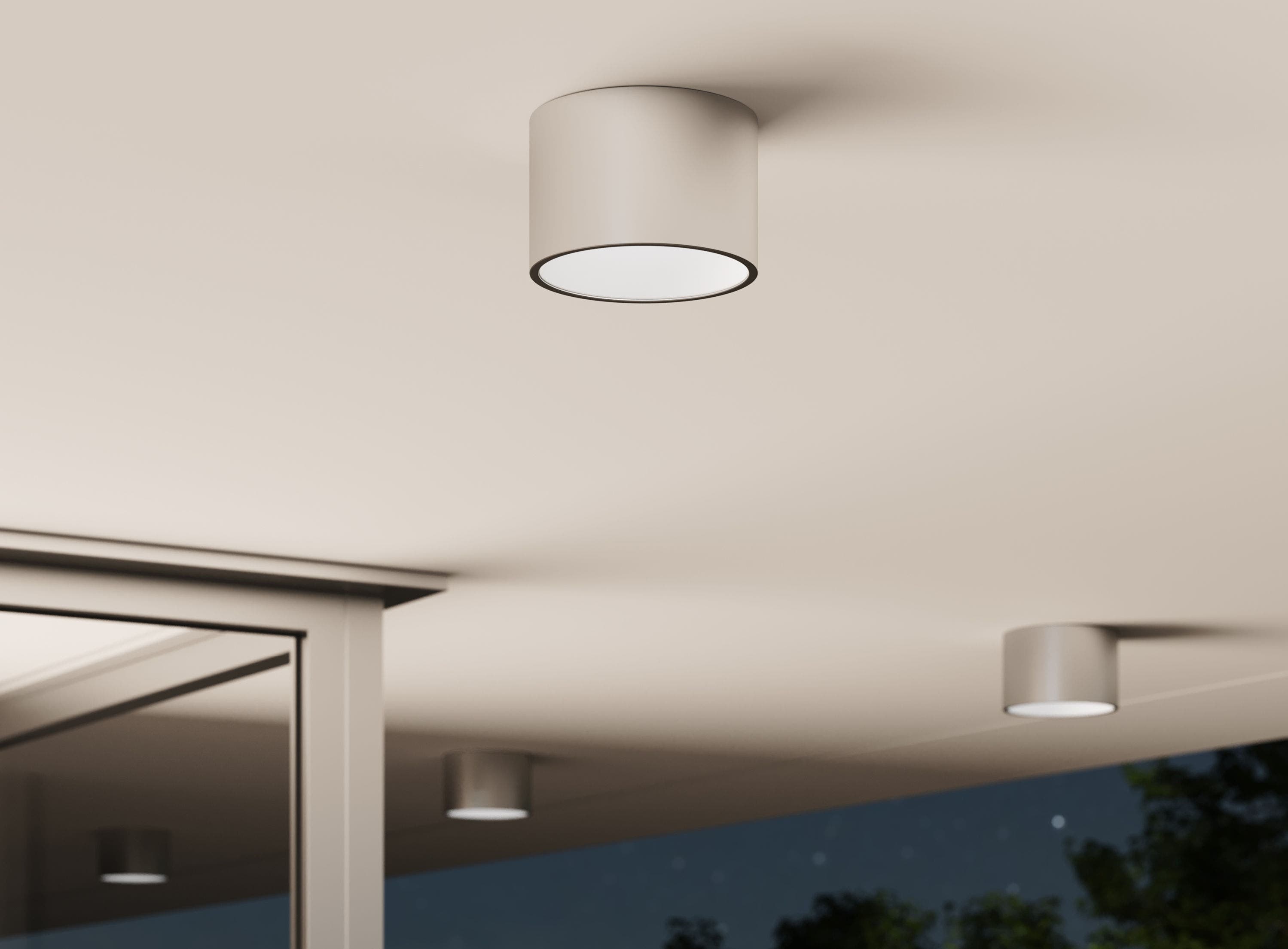

We hope our Lighting Color Temperature 101 guide helped you understand more about what color temperature is and how to implement it in your home to add both form and function into your lighting mix. If you're interested in learning more about lighting types in general, discover our essential lighting types guide.

